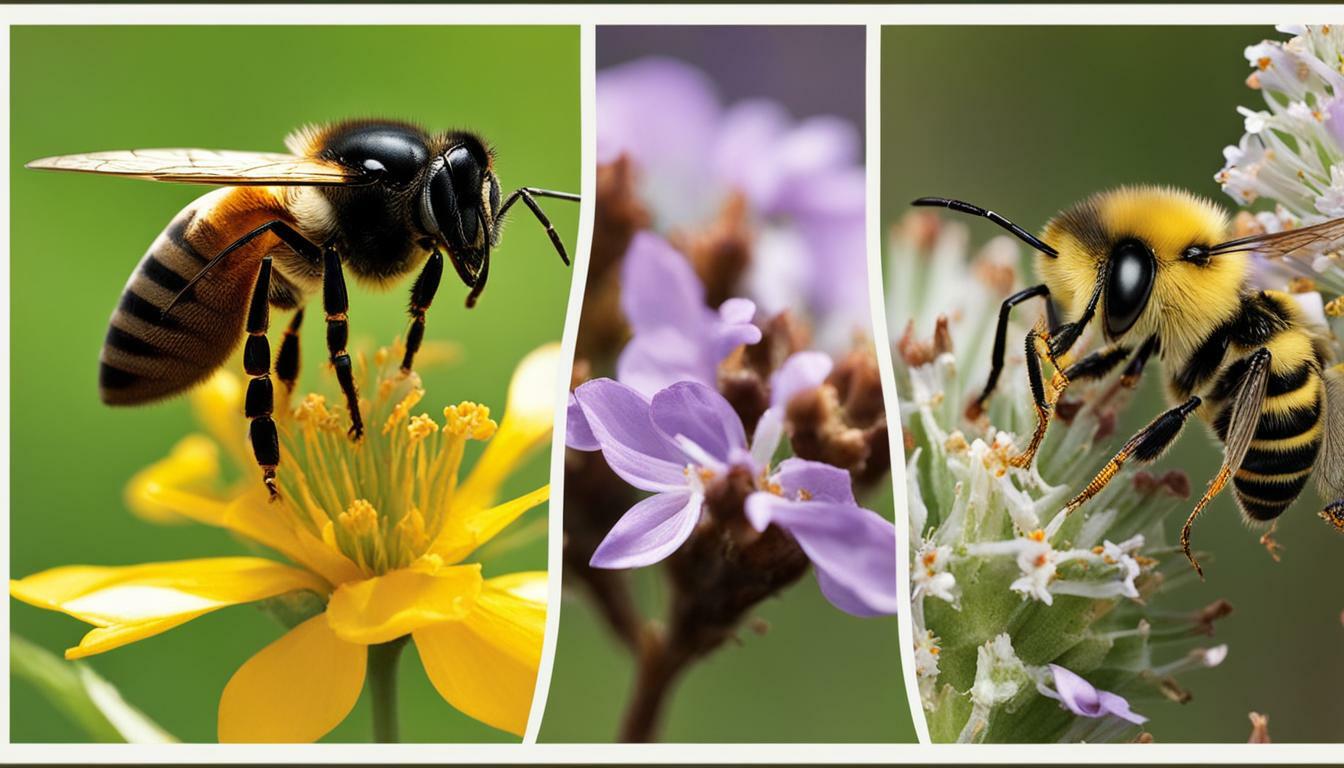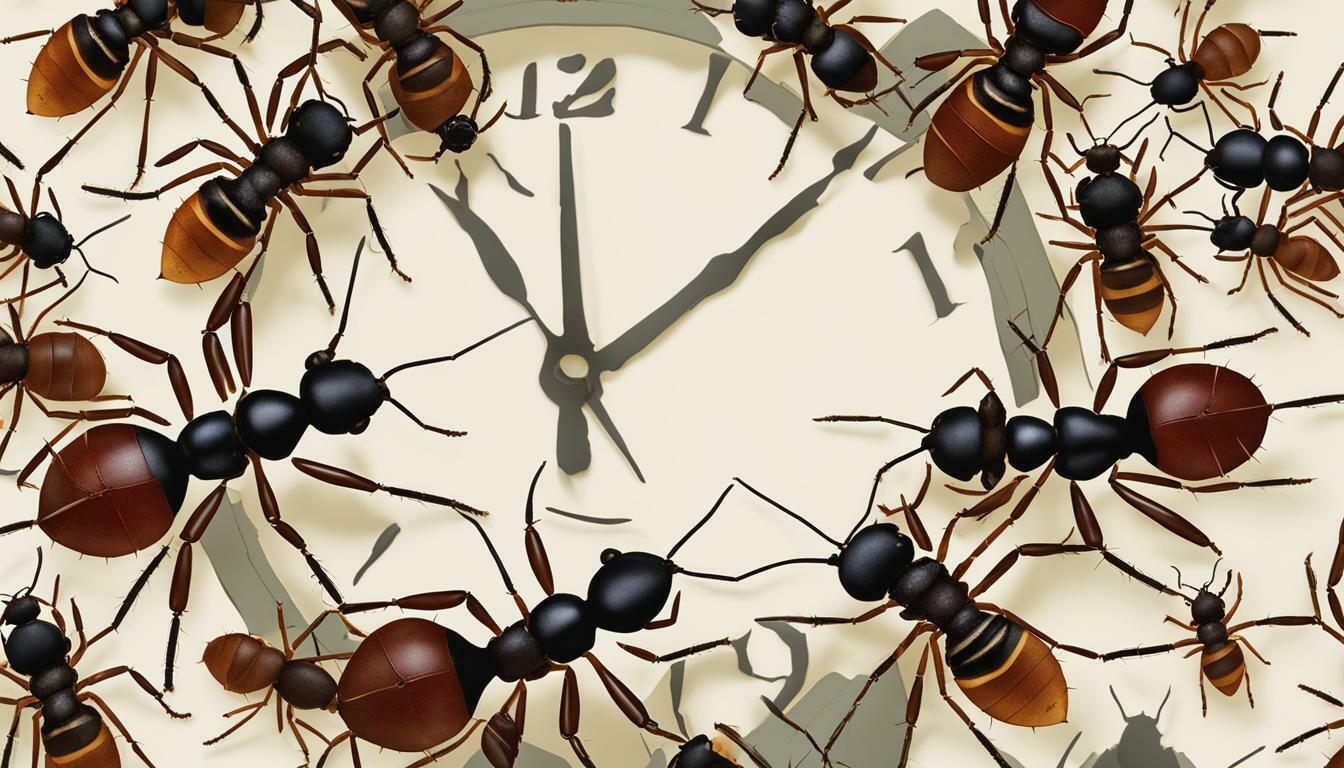Arachnids are fascinating creatures that encompass a diverse group of species, including spiders and harvestmen. While these two arthropods share similar characteristics, they also have significant differences that distinguish them from one another.
Understanding the distinction between spiders and harvestmen is crucial in identifying and appreciating their unique qualities as arachnids.
Key Takeaways:
- Spiders and harvestmen are both arachnids.
- They both have eight legs and are predators.
- Spiders have distinct body parts, venom glands, and fangs, while harvestmen do not.
- Harvestmen do not produce silk, while spiders do.
Spider Characteristics
Spiders are fascinating creatures with a range of unique characteristics that set them apart from other arthropods. They have an unmistakable appearance, with eight legs, two main body parts (cephalothorax and abdomen), and a remarkable ability to produce silk.
One distinguishing feature of spiders is their venom glands, which they use to immobilize their prey. These glands are located in their cephalothorax, along with their fangs, which they use to inject venom into their prey.
In addition to their venom glands, spiders possess specialized structures called spinnerets, which they use to produce silk threads for various purposes. Some use it to build webs for capturing prey, while others use it to create egg sacs.
Spiders come in a variety of shapes, sizes, and colors, making them one of the most diverse groups of arthropods. They are found in almost every habitat on earth, from deserts to rainforests, and play an essential role in controlling insect populations.
Spider Facts
Here are some interesting facts about spiders:
- Spiders have been around for at least 380 million years, making them one of the oldest groups of land animals.
- The silk produced by some spiders is stronger than steel, making it one of the most durable materials in the world.
- Some spiders, such as the trapdoor spider, can live for up to 25 years.
- Not all spiders build webs. Some species hunt for their prey by stalking or ambushing them.
Spider Anatomy
Let’s take a closer look at the anatomy of a spider:
| Body Part | Description |
|---|---|
| Cephalothorax | The combined head and thorax region of a spider, which contains the brain, eyes, and venom glands. |
| Abdomen | The rear section of a spider’s body, which contains the reproductive organs and digestive system. |
| Legs | Spiders have eight legs, each with seven segments and specialized hairs that help them climb and sense their environment. |
| Spinnerets | Specialized structures located on the abdomen of a spider that produce silk threads for various purposes. |
| Fangs | Sharp, hollow structures located in the spider’s mouth that are used to inject venom into their prey. |
| Eyes | Most spiders have eight eyes, each with a specific function, such as detecting motion or light intensity. |
Overall, spiders are incredible arachnids with a diverse range of unique traits and behaviors. Understanding their characteristics can help us appreciate their vital role in the ecosystem and the fascinating world of arthropods.
Harvestman Characteristics
Harvestmen, also known as daddy longlegs or opilionids, may resemble spiders, but they have distinct characteristics that set them apart. Unlike spiders, harvestmen have a fused body that lacks the distinct separation found in spiders. This body structure gives them a unique appearance and also influences their movements.
Harvestmen do not produce silk and do not possess venom glands or fangs. Instead, they rely on their long legs to capture and hold onto prey, using their mouthparts to feed.
Interestingly, unlike spiders, harvestmen have only one main body part. This fused body consists of the cephalothorax and abdomen, which are fused into a single structure. Despite this fused structure, harvestmen possess a complex and intricate internal anatomy that allows them to thrive in their environments.
In addition to their unique anatomy, harvestmen come in a variety of shapes and sizes, with different species sporting different colors and markings. Some species may have defensive strategies that include playing dead or dropping their legs as a distraction to predators.
As a group, harvestmen play an essential ecological role in controlling invertebrate populations, and their diversity adds to the richness of the arthropod world.
Key Differences Between Spiders and Harvestmen
While both spiders and harvestmen are arachnids, they have distinct differences that set them apart.
| Spiders | Harvestmen |
|---|---|
| Have two distinct body parts: cephalothorax and abdomen | Have a fused body that lacks the distinct separation found in spiders |
| Possess venom glands and fangs | Do not have venom glands or fangs |
| Can produce silk using specialized spinnerets | Do not produce silk |
These differences make it easy to distinguish between the two arthropods. Spiders have the ability to produce venom, while harvestmen are harmless to humans and animals. Spiders have two distinct body parts, while harvestmen have a fused body. Spiders can also produce silk, while harvestmen cannot.
It is important to note these differences, as misidentifying these arthropods can result in misinterpretations of ecological roles and behavior. Understanding the differences between spiders and harvestmen is essential to accurately identifying and classifying these arachnids, and helps to maintain the balance of ecosystems.
Spider vs Harvestman
While spiders and harvestmen may look similar, a closer look reveals that they are quite different from each other. Spiders are known for their venom glands, fangs, and ability to produce silk. Harvestmen, on the other hand, lack venom glands and fangs, and do not produce silk. They have a fused body and long legs, which gives them a unique appearance.
Despite these differences, both spiders and harvestmen play important roles in their respective ecosystems. They are predators, feeding on insects and other small creatures, and helping to maintain balance in their environments.
By recognizing the differences between these arthropods, we can gain a deeper understanding and appreciation of the diversity and complexity of the natural world.
Similarities Between Spiders and Harvestmen
Despite their differences, spiders and harvestmen share many similarities as arachnids. Both have eight legs and belong to the same class of arthropods, which also includes scorpions and ticks. They are predators and feed on insects and other small creatures, playing a significant role in controlling pest populations.
Additionally, both spiders and harvestmen play essential ecological roles in maintaining the balance of ecosystems. They are vital contributors to the food chain and aid in nutrient recycling.
While they have their unique characteristics and adaptations, it is crucial to recognize the shared attributes of these fascinating creatures. As arachnids and arthropods, they are an important part of our natural world and deserve our appreciation and respect.
Conclusion
In conclusion, it is clear that spiders and harvestmen are two distinct arachnids with unique characteristics that set them apart. While spiders are known for their venom glands, fangs, and ability to produce silk, harvestmen have a fused body and lack these features. However, they share several similarities, such as their eight legs, predatory diets, and ecological importance.
Understanding the difference between these arthropods is crucial in classifying and identifying them correctly. It also enhances our appreciation for the remarkable diversity of the natural world. By unraveling the mystery of spiders and harvestmen, we gain a deeper insight into the fascinating world of arthropods, and the vital roles they play in maintaining ecosystems.
FAQ
Q: What are the main differences between spiders and harvestmen?
A: Spiders have two distinct body parts, venom glands, and fangs, while harvestmen have a fused body without these structures. Spiders also produce silk, while harvestmen do not.
Q: Do spiders and harvestmen have any similarities?
A: Yes, both spiders and harvestmen are arachnids with eight legs. They are both predators and play important ecological roles.
Q: How can I identify if a creature is a spider or a harvestman?
A: Look for two distinct body parts, venom glands, and fangs to identify a spider. Harvestmen have a fused body without these structures and do not produce silk.
Q: Are spiders and harvestmen dangerous to humans?
A: While some spiders may be venomous and pose a potential threat, most spiders and harvestmen are harmless to humans and play a beneficial role in controlling insect populations.
Q: Can spiders and harvestmen live in the same habitats?
A: Yes, spiders and harvestmen can coexist in the same habitats, as they have overlapping ecological niches and prey on similar insects and small creatures.
 Skip to main content
Skip to main content


